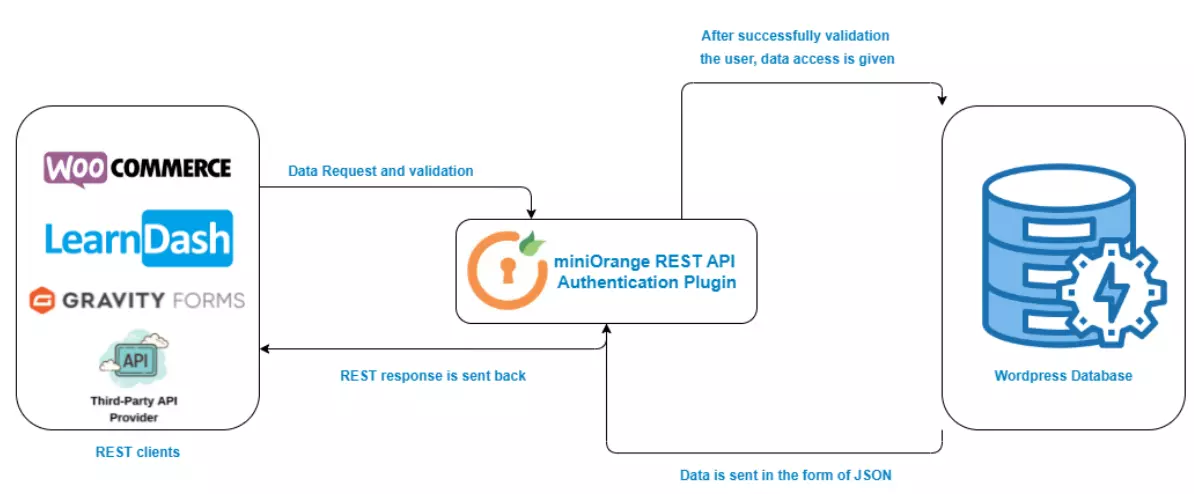Securing WordPress REST API Access
Key Practices for REST API Security
- Keep Software Updated: Regularly update WordPress core, themes, and plugins to patch known vulnerabilities.
- Enforce HTTPS: Use SSL/TLS to encrypt all API traffic, preventing interception and tampering.
- Authentication & Authorization: Implement strong authentication (e.g., OAuth, API keys) and ensure users have only the minimum necessary permissions.
- Nonce Verification: Use WordPress nonces to protect against CSRF attacks by verifying the legitimacy of requests.
- Input Validation & Sanitization: Validate and sanitize all incoming data to block SQL injection and XSS attacks.
- Prepared Statements: Use prepared statements (e.g.,
$wpdb->prepare()) for database queries to prevent SQL injection. - Rate Limiting: Apply rate limits to defend against brute-force, scraping, and denial-of-service (DoS) attacks.
- Security Headers: Add HTTP security headers (e.g., CSP, X-Frame-Options) to harden your API endpoints.
- Logging & Monitoring: Monitor API access logs for suspicious activity and respond promptly to anomalies.
- IP Whitelisting: Restrict API access to trusted IP addresses where feasible.
Advanced Measures
- Custom User Roles: Create granular user roles with least-privilege access to API endpoints.
- Disable Unused Endpoints: If certain REST API endpoints are not needed, consider disabling them to reduce attack surface.
Securing (or Disabling) XML-RPC Access
Risks of XML-RPC
- Brute Force Attacks: XML-RPC transmits usernames and passwords with each request, making it a target for brute-force login attempts.
- DDoS Attacks: The pingback feature can be abused in distributed denial-of-service attacks.
- Outdated Protocol: XML-RPC is largely superseded by the more secure REST API in modern WordPress installations.
Best Practices
- Disable If Unused: If your site does not require XML-RPC (e.g., for Jetpack, mobile apps, or remote publishing), disable it entirely to eliminate these risks.
- Selective Access: If XML-RPC is necessary, use security plugins to create policies that allow only specific, legitimate requests and block the rest.
- Monitor for Abuse: Regularly check logs for unusual XML-RPC activity, which may indicate attempted attacks.
How to Check and Disable XML-RPC
- Check Status: Use an XML-RPC validator to see if the endpoint is active on your site.
- Disable via Plugin: Many security plugins (e.g., Really Simple SSL, Wordfence) offer options to disable XML-RPC with one click.
- Manual Disable: For advanced users, XML-RPC can be disabled via
.htaccessrules or custom code snippets.
Comparison Table: REST API vs. XML-RPC Security
| Feature | REST API (Modern) | XML-RPC (Legacy) |
|---|---|---|
| Authentication | OAuth, API keys, tokens | Username/password with every request |
| Data Transmission | Encrypted (HTTPS) | Can be plaintext (unless forced HTTPS) |
| Brute Force Risk | Lower (token-based) | Higher (credential-based) |
| DDoS Risk | Moderate (rate limiting helps) | High (pingback abuse) |
| Recommended Action | Secure with best practices | Disable if not required |
Summary
- Secure the WordPress REST API with layered defenses: HTTPS, authentication, input validation, rate limiting, and monitoring.
- Disable XML-RPC unless specifically needed, as it introduces significant security risks with minimal benefit for most modern sites.
- Regularly audit both API endpoints for unnecessary exposure and monitor for suspicious activity.
By following these practices, you can significantly reduce the risk of unauthorized access and attacks via WordPress APIs.




















Maple Ranking offers the highest quality website traffic services in Canada. We provide a variety of traffic services for our clients, including website traffic, desktop traffic, mobile traffic, Google traffic, search traffic, eCommerce traffic, YouTube traffic, and TikTok traffic. Our website boasts a 100% customer satisfaction rate, so you can confidently purchase large amounts of SEO traffic online. For just 720 PHP per month, you can immediately increase website traffic, improve SEO performance, and boost sales!
Having trouble choosing a traffic package? Contact us, and our staff will assist you.
Free consultation